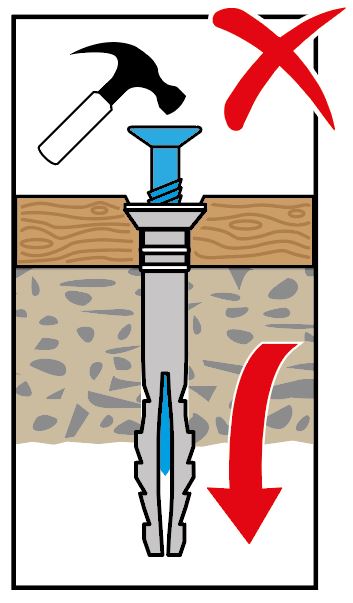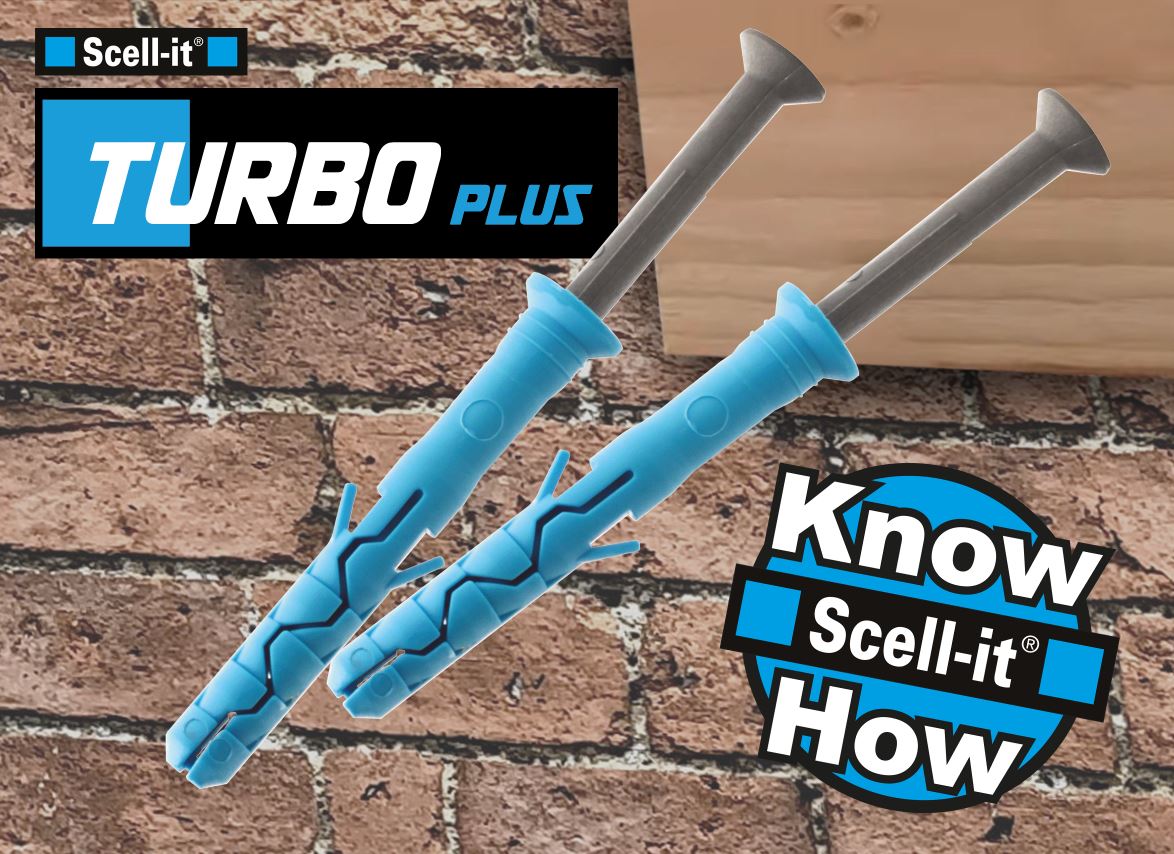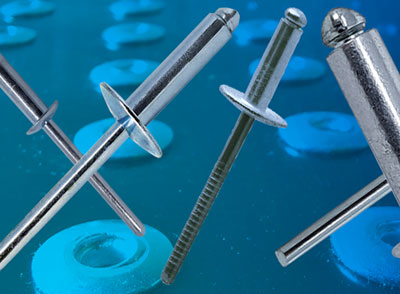
Hammer Fixings and how to install them.
Hammer Fixings
Hammer Fixings are commonly used to secure timber or plastic to masonry, concrete or 3d printed concrete. They are quick and simple to use.
The plug is pushed into the hole and the screw is then hammered fully home – not screwed in with a screwdriver. This is because the “thread” isn’t like a normal screw, it slopes back towards the head so the threads act like a barb. The plug expands when hammered in, to create a secure anchor and can be unscrewed to be removed. They usually come pre-assembled.
What is the difference between hammer fixings and frame fixings?
Hammer fixings allow screws to be hammered in while frame fixings are ideal for heavy loads like adding frames to timber and masonry.
Installing a hammer fixing
- Drill through wood then through brick. Ensure the hole is the correct diameter and correct depth for the length of fixing (approx. 10mm longer).
Use your drill’s depth gauge to avoid drilling the hole too deep. If your drill doesn’t have a depth gauge you can slide a spacer ring on the drill bit and tighten the screw to fix it at the right drilling depth. If you don’t have a spacer ring, you can stick a piece of coloured tape at the right place on the drill bit.
- Manually insert the nylon plug until it is flush with the surface.
- Hammer the screw until flush with the surface. The plug will expand and grip the material.
- Fixing is now installed securely (but can be unscrewed if required).

Installation notes
- When fixing into brick – ensure to drill into the solid brick and not the mortar.

- When installing make sure that you do not drill through the final substrate. The plug expansion works only within a solid hole and not in a void situation (see pic).
Hammer fixings can also be used to fix two pieces of timber together which stops rusting of the screw, as some timbers will attack metal screws. They tend to be light duty fixings owing to the size diameters available.
 The Scell-it UK range includes the Turbo Plus – an anti-corrosion Nylon plug which is especially usefully for installations by the coast where it protects against salt water that is present in the atmosphere. More info >here<.
The Scell-it UK range includes the Turbo Plus – an anti-corrosion Nylon plug which is especially usefully for installations by the coast where it protects against salt water that is present in the atmosphere. More info >here<.
For more information call 01785 246539 or go to:
https://scellit.co.uk/nylon-and-cavity/
for the Scell-it UK range.
continue reading






